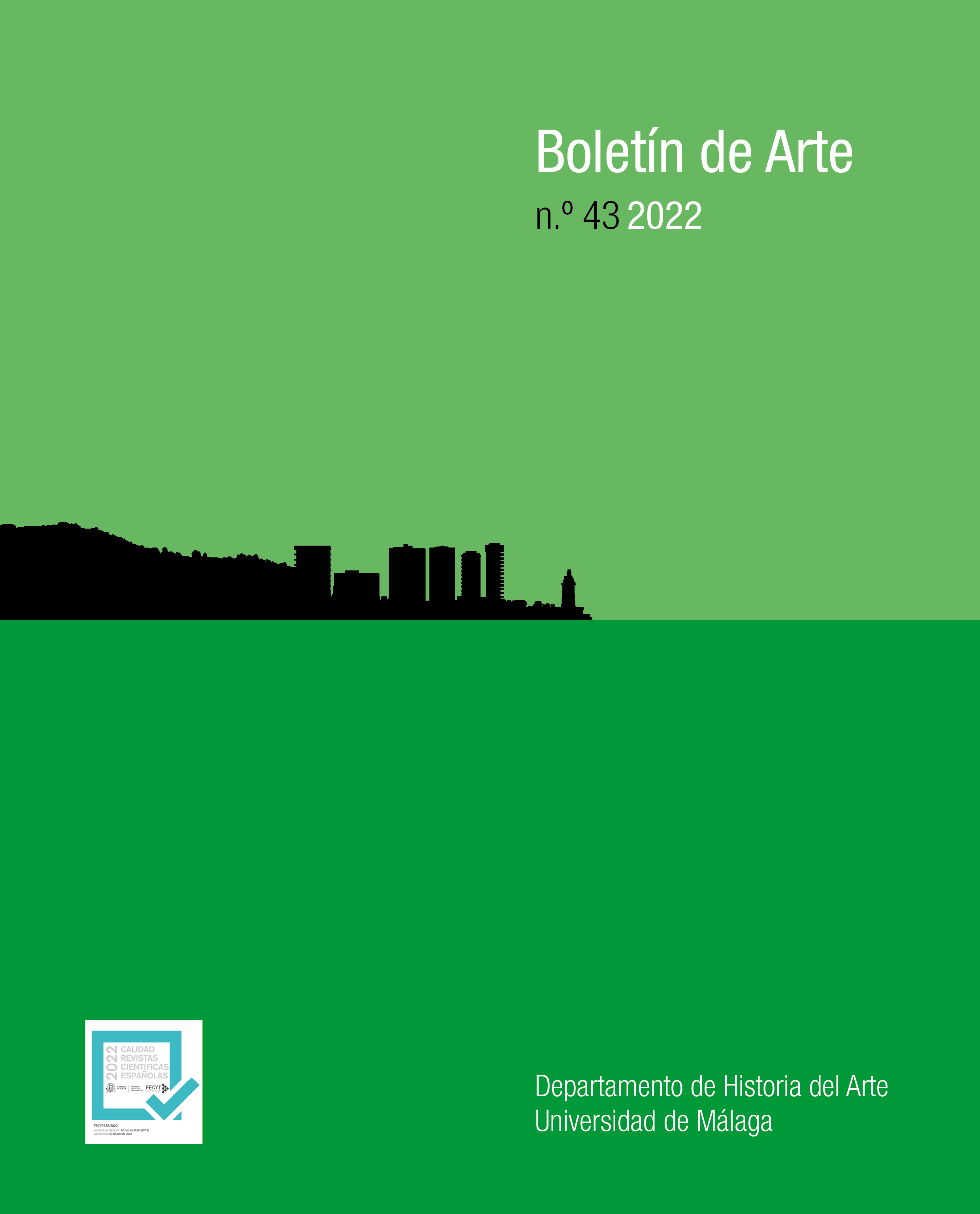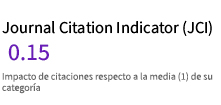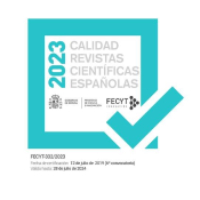Multidirectional and Multilevel Models of Enjoyment between Spatial Narration and Multisensory Perceptual Experience
DOI:
https://doi.org/10.24310/BoLArte.2022.vi43.12062Keywords:
spatial perception, multidimensional knowledge, multisensory interaction, empathic design, adaptive and inclusive fruition, augmented cultural experienceAbstract
The contribution reports the research work on models and processes of knowledge transfer for a wide audience combining space perception and experimentation, promoting interactive enjoyment and multisensory participation to the cultural experience for the enhancement of current models.
The acquisition of knowledge from different disciplinary cores – design, archaeology, physics, cognitive sciences, computer science, electronics, art history – allowed tracing the ongoing transformations and obtaining an overview of the current models of fruition both nationally and internationally. The challenge will be to give further emphasis to the improvement of current models and to guide the future design of interactive fruition by bringing together the various aspects analysed in order to return meaningful and customized narrations based on the users’ needs, through perceptual, immersive and multisensory experiences in the spatial dimension of the project, thus engaging the user at multiple levels.
Downloads
Metrics
Publication Facts
Reviewer profiles N/A
Author statements
Indexed in
-
—
- Academic society
- N/A
- Publisher
- Universidad de Málaga.
References
AUGENTI, Andrea (2019), «I predatori del contesto perduto: gli archeologi e l’invisibile», in CICCOPIEDI, Caterina (cur.), Archeologia invisibile, Franco Cosimo Panini, Modena, pp. 8-11.
BASU, Paul (2007), «The Labyrinthine Aesthetic in Contemporary Museum Design», in BASU, Paul & MacDONALD, Sharon (cur.), Exhibition Experiments, Blackwell Publishing, Malden/Oxford/Carlton, pp. 47-70.
BONACINI, Elisa (2020), I musei e le forme dello storytelling digitale, Aracne Editrice, Canterano.
BROUILLARD, Julien, LOUCOPOULOS, Claire & DIERICKX, Barbara (2015), Digital Storytelling and cultural heritage: stakes and opportunities, Officine Grafiche, Tiburtine.
BURDICK, Anne et al. (2012), Digital_Humanities, Massachusetts Institute of Technology. Trad. it. BITTANTI, Matteo (2014), Umanistica_Digitale, Arnoldo Mondadori Editore S.p.A, Milano (Kindle Edition).
CASSATELLA, Claudia (2001), Iperpaesaggi, Testo & Immagine, Torino.
CELASCHI, Flaviano (2014), «La realtà in funzione di sé: dalla percezione alla costruzione del soggetto progettante», in BUIATTI, Eleonora, Forma Mentis Neuroergonomia sensoriale applicata alla progettazione, FrancoAngeli, Milano, pos. 4125-4263 (Kindle Edition).
CHILDREN’S MUSEUM OF THE ARTS (2021), «Media Lab Interactive Storytelling VR». In: <https://cmany.org/classes-and-activities/activities/view/interactive-storytelling-vr/> (date consulted: 07-09-2021).
COME-IN! (2019), Linee Guida, Project Inter-Reg Central Europe.
COSTA, Marco (2016), Psicologia ambientale e architettonica. Come l’ambiente e l’architettura influenzano la mente e il comportamento, FrancoAngeli, Milano.
DEAN, David (1994), Museum exhibition theory and practice, Routledge, London.
DE CARO, Laura (2015), «Moulding the Museum Medium: Explorations on Embodied and Multisensory Experience in Contemporary Museum Environments», ICOFOM Study Series, 43b, pp. 55-70.
FALCINELLI, Riccardo (2020 [2011]), Guardare Pensare Progettare Neuroscienze per il design. Stampa Alternativa & Graffiti, Viterbo.
FALK, John H. (2013), «Museum visitors’ motivations and learning», in LUNDGAARD, Ida Braendholt & JENSEN, Jacob Thorek (cur.), Museums social learning spaces and knowledge producing processes, Kulture Styrelsen, Copenhagen, pp. 106-133.
FELD, Steven (2010), «Acustemologia», in GIURIATI, Giovanni & TEDESCHINI LALLI, Laura (cur.), Spazi sonori della musica, L’Epos, Palermo, pp. 33-44.
FONTANA, Andrea (2010), Storyselling: Strategie del racconto per vendere sé stessi, i propri prodotti, la propria azienda (Kindle Edition), RCS Libri s.p.a., Parma.
GARDNER, Howard (2011 [1983]), Frames of Mind. The Theory of Multiple Intelligences, Basic Books, New York.
GITT, Werner (2006), In the Beginning was Information, First Master Books printing, Portland.
GREIMAS, Algirdas Julien & COURTÉS, Joseph (1982 [1979]), Semiotics and Language: An Analytical Dictionary, Indiana University Press, Bloomington.
HAMBURGER KUNSTHALLE (2021), «Out of Space». In: <https://www.hamburger-kunsthalle.de/en/exhibitions/out-space> (date consulted: 07-09-2021).
HOOPER-GREENHILL, Eilean (2005), I musei e la formazione del sapere, Il Saggiatore, Bologna.
IRACE, Fulvio (2013) (cur.), Design & cultural heritage. Immateriale. Virtuale. Interattivo, I, Mondadori Electa S.p.A., Milano.
JOHNSSON, Emily (2006), Telling tales. A guide to developing effective storytelling programmes for museums, London Museums Hub, London.
KNAPP, Pat Matson (2009), «Sony Wonder Technology Lab», segdDESIGN, 26. In: <https://segd.org/sony-wonder-technology-lab> (date consulted: 26-08-2021).
KOTLER, Neil G. & KOTLER, Philip (2007), Museum Strategy and Marketing: Designing Missions, Building Audiences, Generating Revenue and Resources, Jossey-Bass, U.S.A.
KOZHEVNIKOV, Maria, KOSSLYN, Stephen & SHEPARD, Jennifer (2005), «Spatial versus object visualisers: A new characterisation of cognitive style», Memory & Cognition, 33, pp. 710-726.
LAWSON, Brian (2001), The Language of Space, Architectural Press, Oxford.
LEVENT, Nina & PASCUAL-LEONE, Alvaro (2014) (cur.), The Multisensory Museum. Cross-Disciplinary Perspectives on Touch, Sound, Smell, Memory, and Space, Rowman & Littlefield, United States of America.
LOUVRE (2021), «The Mona Lisa in virtual reality in your own home». In: <https://www.louvre.fr/en/what-s-on/life-at-the-museum/the-mona-lisa-in-virtual-reality-in-your-own-home> (date consulted: 28-07-2021).
MALDONADO, Tomás (2015 [1992]), Reale e virtuale, Giangiacomo Feltrinelli Editore, Milano.
MCCARTHY, Bernice & MCCARTHY, Dennis (2006), Teaching around the 4MAT cycle: designing instruction for diverse learners with diverse learning styles, Corwin Press, Thousand Oaks, Calif.
MILANO, Alessandro (2020), Appunti per un museo vivo. Comunicazione, educazione, esperienze, Amazon Fulfillment Poland Sp. z o.o., Wroclaw, Poland.
NAJBRT, Lukáš & KAPOUNOVÁ, Jana (2014), «Categorization of Museum Visitors as Part of System for Personalized Museum Tour», ICTE Journal, 3(1), pp. 17-27.
NIEUWHOF, Anne (2017), Thesis, Olfactory Experiences in Museums of Modern and Contemporary Art. Smell as a New Curatorial Strategy, Research Master Arts & Culture.
PEKARIK, Andrew J., DOERING, Zahava D. & KARNS, David A. (1999), «Exploring Satisfying Experiences in Museums», Curator The Museum Journal, 42, pp. 152-173.
PROPP, Vladimir (1985), Le radici storiche dei racconti di fate, Bollati Boringhieri, Torino.
SANTI, Anna (2014), PhD Thesis, Il design per la conoscenza, la fruizione e la valorizzazione online degli archivi e del patrimonio del moderno | Design processes for online knowledge, use and enhancement of the archives and modern architectural heritage, Politecnico di Milano.
SHERRINGTON, Sir Charles (1906) (cur.), The integrative action of the nervous system, Yale University Press, New Haven.
SMITHSONIAN National Museum of American History (2010), «Guidelines for Accessible Exhibition Design». In: <https://access.si.edu/museum-professionals> (date consulted: 18-11-2020).
STEIN, Barry E. & MEREDITH, M. Alex (1993), The Merging of the Senses, MIT Press, Cambridge, MA.
STUDIO ROOS MEERMAN (2018), «Tactile Orchestra in New York». In: <http://roosmeerman.com/news/tactile-orchestra-new-york> (date consulted: 08-09-2021).
TEAMLAB (2021), «Works». In: < https://www.teamlab.art/> (date consulted: 06-09-2021).
TROCCHIANESI, Raffaela (2013), «L’Archivio Digitale degli Allestimenti Temporanei: contesto culturale, motivazioni, questioni aperte», in LUPO, Eleonora & TROCCHIANESI, Raffaela (cur.), design & cultural heritage. Progetto e memoria del temporaneo, III, Mondadori Electa S.p.A., Milano, pp. 93-99.
VI, Chi Thanh et al. (2017), «Not just seeing, but also feeling art: Mid-air haptic experiences integrated in a multisensory art exhibition», Int. J. Human-Computer Studies, 108, pp. 1-14.
UMIKER-SEBEOK, Jean (1994), «Behavior in a Museum: A Semio-Cognitive Approach to Museum Consumption Experiences», Signifying Behavior, vol. 1, n. 1, Canadian Scholars’ Press, Toronto.
WHITEHEAD, Christopher, ECKERSLEY, Susannah & MASON, Rhiannon (2012). Placing Migration in European Museums, MelaBooks, Politecnico di Milano.
Downloads
Published
How to Cite
Issue
Section
License
Todos los contenidos publicados en la revista Boletín de Arte están sujetos a la licencia Creative Commons Reconocimento-NoComercia-Compartirigual 4.0 cuyo texto completo puede consultar en <http://creativecommons.org/licenses/by-nc-sa/4.0>

Los/as autores/as cuyas contribuciones sean aceptadas para su publicación en esta revista conservarán el derecho no exclusivo de utilizar sus contribuciones con fines académicos, de investigación y educativos, incluyendo el auto-archivo o depósito en repositorios de acceso abierto de cualquier tipo.
La edición electrónica de esta revista esta editada por la Editorial de la Universidad de Málaga (UmaEditorial), siendo necesario citar la procedencia en cualquier reproducción parcial o total.












4.png)
